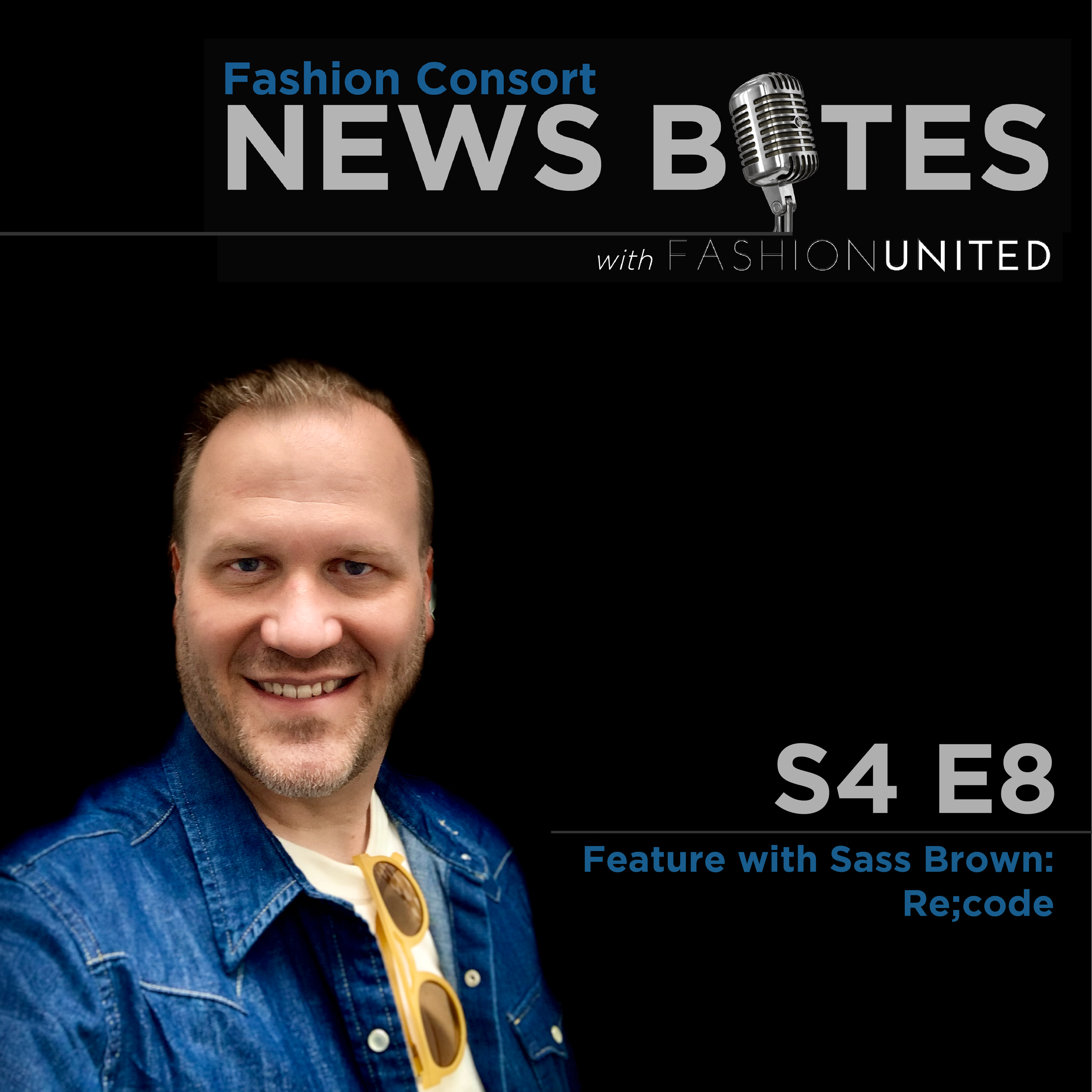Re;code, Everything is Material
In this episode, part of our monthly brand feature series, we learn about Re;code, a Seoul, Korea based company redefining the fashion design process by reusing a vast array of materials.
Joshua Williams: Each month on NewsBytes, we feature a fashion brand that approaches business differently and innovatively or operates outside of the main fashion systems and capitals. I'm with Sass Brown, an expert in ethical fashion, sustainability and craftsmanship. She is the former Dean of Art and Design at the Fashion Institute of Technology and the founding Dean at Dubai Institute of Design and Innovation.
Joshua Williams: Hello, Sass. Who are we featuring this month?
Ah, Re;code, based in Korea. Can you tell us a little bit about them and what makes them unique.
Sass Brown: Yeah, they are a really fabulous company. And they work effectively with upcycled materials, revalued, discarded, and unused materials.
They're part of a larger conglomerate called Kolon Industries. They're a small subsidiary of it. And so they utilize the dead stock and the wasted materials from the other labels that are produced under the same umbrella company. So they use dead stock from their own warehouse. They use military waste. They use industrial waste, things like car seat covers and car airbags and seat belts and things like that. So, they do have some quite unique sources for their materials.
And they do use also post-consumer, or finished garments anyway. So they dismantle them and reconstruct and redesign them. You can see it quite clearly when you look at their designs. You'll often see half a jacket front, which is inside out, or, you see the pocket details or a sweater that's been applicated on top of a sweater up front that's been appliqued on top of a shirt, for example. So you can see the reconstruction quite clearly in their aesthetic.
Joshua Williams: How driven are they by a particular visual aesthetic or do they let the waste, the consumer waste that you're talking about sort of drive what that vision becomes?
Sass Brown: I think it's a bit of both.
They have a very distinct aesthetic. You can pretty much tell a Re;code piece. They have a way of deconstructing and reconstructing their garments that's quite specific and quite unique and various aesthetically pleasing. You often see the deconstruction of something else in the finished garment. There are also highly limited numbers. So many of their pieces come with a little label saying, one of six, two of six, et cetera. So you know how few were made. Obviously they're coming from limited resources. I think that the materials do drive it to a degree. That's always the case when you're talking about upcycling, especially when you're talking about offcuts of fabrics, where they may be awkward sizes or shapes, and you have limited quantities, but they do very much have their own aesthetic.
Joshua Williams: I always love when you can see the process in the design itself.
And speaking of process, they do a lot more than just present a collection. They're very involved in terms of how they engage their customers.
Sass Brown: They also do a lot of collaborations. And so they did a fabulous one with Nike, where they upcycled their wasted garments into entirely redesigned, reconstructed pieces that were very uniquely Re;code, even though they were constructed from wasted garments and materials from Nike. It's a lovely collaboration.
But they also do other things. So they have ReCollection, for example. And that's a customization service, that they actually offer to customers to bring in any garment from any brand and they will redesign and remake it customized to them. It's a fabulous service for reusing those 20 odd garments in the back of your wardrobe that you've never worn and never will wear. That's one of the services they offer.
They do another line called ReNano, which is actually where they focus on using all sorts of sort of subsidiary materials, like labels and things like that that are utilized on the garments; labels and buttons and zippers. So you get a lot of these accessories, the garment furniture, if you like, that's very much prevalent in the design.
And then they do these workshops and pop-ups, which are consumer experiences, where they will either do making workshops with consumers or whether they'll show skills or whether they're part of an exhibit. They have a new art space, which is a collaboration called ReSpace, which shows fashion in an art context.\ It's a collaboration with one of the leading contemporary art museums in Seoul. So they do all of these different components to what they do, which I think made some very accessible. So you may not be buying one of their six handmade, deconstructed redesigned jackets, for example, but you could go participate in one of the workshops.
They even have a vending machine where you can buy all of the materials to do the " make do and mend" at home, which I think was probably something that came out of lockdown, right? Where they couldn't do the workshops and open up their studio or the art museum. They have a vending machine, which is super cool.
Joshua Williams: I love that; that's so cool.
Sass Brown: It is cool.
Joshua Williams: What can larger brands or organizations learn from Re;code? You've mentioned collaborations, but are there other ways that we can learn from them?
Sass Brown: I think first and foremost,the fact that they reutilize other brand's waste. Many labels fall under an umbrella of a greater company, all of which are making waste. So they capitalize on the waste of those other brands. And I think that's a fantastic model for anyone who's producing, to develop another label that's based on the waste that they produce. I think that's a fantastic model for anyone that's producing
Joshua Williams: So often brands are connected together as part of one family in order to mitigate risk and to ensure that there's always one brand that's out in front ,or on trend, but I love this idea that it also helps work together from a sustainability factor in terms of materials.
Where can we find more information about Re;code? I know they're in lots of different places, engaging, but what are some of the ways we can connect with them?
Sass Brown: They have a great Instagram feed and it's literally at Re;code one word, R E C O D E And then there's an underscore. They have a website and that's through the Kolon Industries company. So it's the umbrella company. It's KolonMall and Kolon is K O L O N. And then mall, M a double L .com, backslash Re;code, R E C O D E.
Joshua Williams: Wonderful. Well, thank you so much Sass, and we look forward to having another conversation next month.
Sass Brown: I look forward to it too. Thank you, Joshua.


